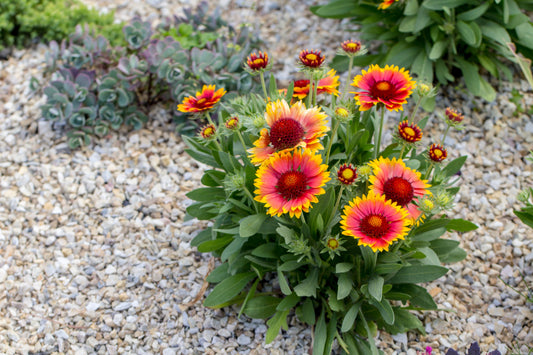Melon Planting & Growing Guide
Planting Guide Information
-
Plant level to just above soil line.Planting Depth
-
Variety SpecifcPlanting Proximity
-
SpringPlanting Season
-
Grow your own food!Plant Benefits
-
ModerateWater Quantity
-
Harvest in Summer when mature.Bloom Season
-
Full SunSunlight Quantity
-
Grow as Annual past danger of frost.Hardiness Zones
Additional Growing Information
Where to Plant Melons
Plant Melons in full sun in well-draining soil. In areas with heavy clay or poor-draining soil, it’s best to plant in a raised bed. Choose a spot where there is plenty of room for the vines to spread out, especially for larger melons.
When to Plant Melons
Plant Melons in the spring when the danger of frost has passed. Soil temperatures above 70℉ are preferable.
How to Plant Melons
- Find a location with full sun and well-draining soil. If you notice that water still puddles 5 to 6 hours after a hard rain, it's best to find a different spot or plant in a raised bed or container.
- Plant your Melons as soon as possible after they arrive. If you can’t plant immediately, make sure to give them a drink of water and set them somewhere out of direct sun and wind until you can get them planted.
- Dig a hole the same depth as the nursery container. Remove the plant from the container and set in the hole. If the roots look compacted, it’s okay to gently loosen them a bit. Fill the hole with soil and tamp down firmly.
- Water thoroughly after planting to settle the soil around the roots.
How to Grow Melons
- Water at least once a week, more often in warm weather; 1” of water at a time is a good estimate. Drip irrigation or soaker hoses help get the water right at the roots with minimal evaporation and reduce the spread of diseases like powdery mildew.
- Add a light mulch of compost to the surrounding soil to improve drainage, reduce evaporation, and keep competing weeds at bay.
- Apply a balanced fertilizer or fish emulsion solution a week or two after planting and every month until harvest.
Melon Tips & Tricks
- Lay down black plastic sheeting around the plants to keep the soil warm in milder climates. That extra heat can really help the roots develop.
- Watch for signs of beetles or rodents chewing on the plants or fruit. Floating row covers can help keep pests away.
- Train the vines of smaller melons, like personal-size watermelon, to grow up a trellis if you’re short on space, but be prepared to use some kind of sling to secure the fruits to the support structure.
- Harvest watermelons when the spot on the bottom of the melon that rests on the ground turns yellow. Check to make sure the melon feels heavy and that the rind is dull.
- Harvest cantaloupes when they smell sweet and the leaf and tendril near the stem has withered.
- Harvest honeydews when the bottom gets slightly soft to the touch and the rind turns yellowish and dull.
From the Family
-
Example product title
Regular price $19.99Sale price $19.99 Regular priceUnit price per -
Example product title
Regular price $19.99Sale price $19.99 Regular priceUnit price per -
Example product title
Regular price $19.99Sale price $19.99 Regular priceUnit price per -
Example product title
Regular price $19.99Sale price $19.99 Regular priceUnit price per -
Example product title
Regular price $19.99Sale price $19.99 Regular priceUnit price per



